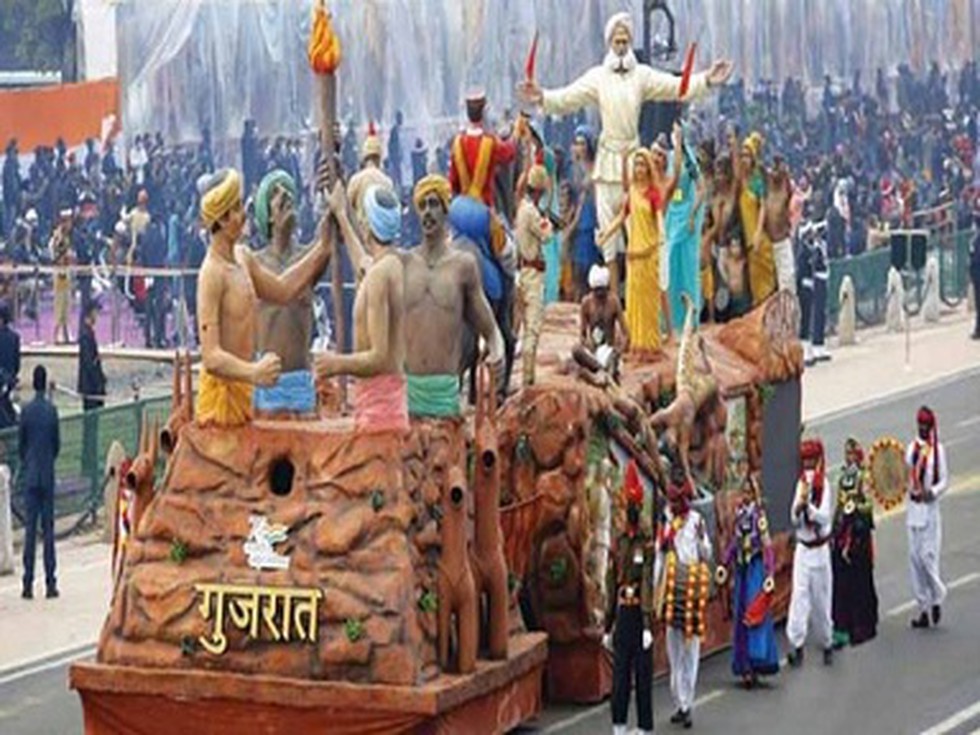What was the Pal-Dadhvav massacre?
Context
-
Recently, the Gujarat government marked 100 years of the Pal-Dadhvav killings, calling it a massacre “bigger than the Jallianwala Bagh”. Before this, the incident had been featured on the state’s Republic Day tableau.
About Pal-Dadhvav massacre
- The Pal-Dadhvav massacre took place on March 7, 1922, in the Pal-Chitariya and Dadhvaav villages of Sabarkantha district, then part of Idar state.

- The day was Amalki Ekadashi, which falls just before Holi, a major festival for tribals.
- Villagers from Pal, Dadhvav, and Chitariya had gathered on the banks of river Heir as part of the ‘Eki movement’, led by one Motilal Tejawat.
- The movement was to protest against the land revenue tax (lagaan) imposed on the peasants by the British and feudal lords.
- Tejawat, who belonged to Koliyari village in the Mewad region of Rajasthan, had also mobilised Bhils from Kotda Chhavni, Sirohi, and Danta to participate.
- The impact of the protest was felt in Vijaynagar, Dadhvaav, Poshina and Khedbrahma, which are now talukas of Sabarkantha; the Aravalli districts, Banaskantha and Danta of Banaskantha district; and Kotda Chhavni, Dungarpur, Chittor, Sirohi, Banswada and Udaipur of Rajasthan, all of which were then princely states.
- Tejawat had been outlawed by the Udaipur state, which had announced a Rs-500 reward on his head.
- The Mewad Bhil Corps (MBC), a paramilitary force raised by the British that was on the lookout for Tejawat, heard of this gathering and reached the spot.
Who was Tejawat
- Born into a merchant (Baniya) family in the adivasi-dominated Koliyari village, Tejawat was employed by a landlord, where he worked for eight years.
- Outraged by the atrocities and exploitation of the tribal people, Tejawat quit the job in 1920 and devoted himself to social work and reform. To this day, local tribals recount the Pal-Dadhvav massacre in songs sung at weddings and fairs. One such song is ‘Hansu dukhi, duniya dukhi’.
Tribal population
- Gujarat has a near 14 per cent tribal population that resides along its northern-eastern stretch, called the ‘poorvi patti’, bordering the districts of Madhya Pradesh, Rajasthan and Maharashtra.
- Bhils are the dominant tribe in this stretch, which covers the districts of Aravalli, Sabarkantha, Banaskantha, Panchmahal, Chhota Udepur, Mahisagar, Narmada, Dahod, Tapi, Navsari and Dang.
Source: IE
Visit Abhiyan PEDIA (One of the Most Followed / Recommended) for UPSC Revisions: Click Here
IAS Abhiyan is now on Telegram: Click on the Below link to Join our Channels to stay Updated
IAS Abhiyan Official: Click Here to Join
For UPSC Mains Value Edition (Facts, Quotes, Best Practices, Case Studies): Click Here to Join
